#Donald Sosin
Photo
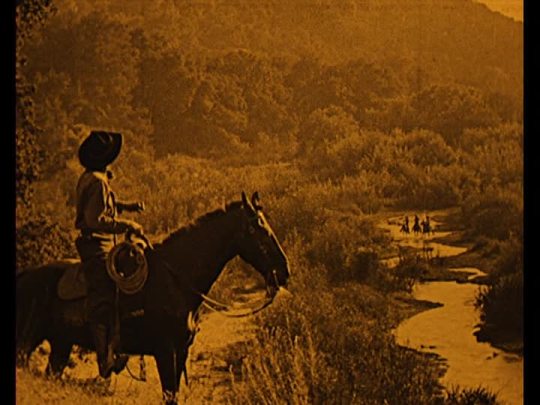
Bucking Broadway, John Ford (1917)
#John Ford#George Hively#Harry Carey#Molly Malone#L.M. Wells#Vester Pegg#William Steele#John W. Brown#Ben F. Reynolds#Donald Sosin#1917
8 notes
·
View notes
Text
Le Giornate del Cinema Muto 2021: Pordenone Post No 6
Le Giornate del Cinema Muto 2021: Pordenone Post No 6
Pordenone 6
Unprecedented scenes in the Teatro Verdi tonight, as the audience of customarily meek silent film enthusiasts stamped their feet, booed and exclaimed “outrageous!” “Close the curtains!” and “Down with this sort of thing!” But more reports on the incident the papers are calling the 2021 Giornate riot later.
(more…)
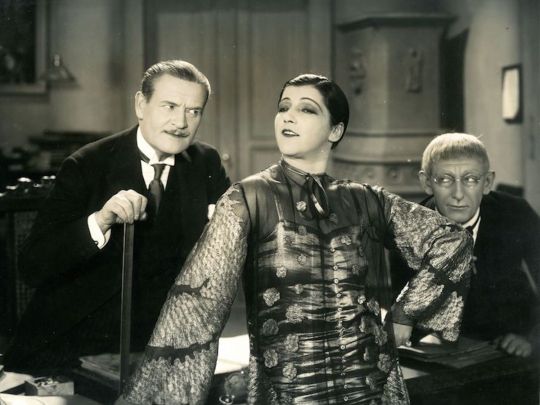
View On WordPress
#Carmine Gallone#Donald Sosin#Ellen Richter#featured#Frank Bockius#Gabriel Thibaudeau#GCM40#Giornate del Cinema Muto#John Sweeney#Korean cinema#Nasty Women#Pordenone Silent Film Festival#silent film#Willi Wolff
1 note
·
View note
Video
youtube
Le retour à la raison [Return to reason] by Man Ray in 1923. With famous model Kiki de Montparnasse.
3 notes
·
View notes
Photo
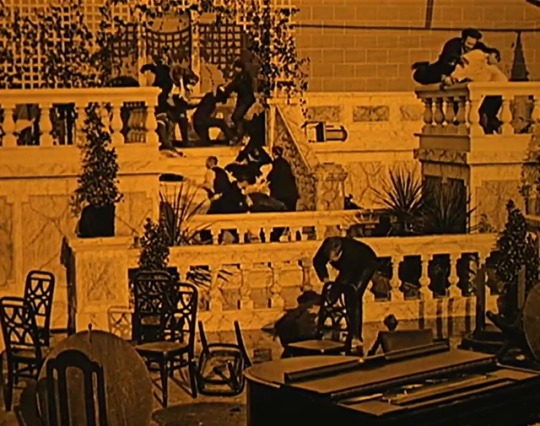
Today's review on MyOldAddiction.com, Bucking Broadway by #JohnFord starring #HarryCarey, "charming western romance" JOHN FORD Bil's rating (out of 5): BBB. USA, 1917. Universal Film Manufacturing Company… 211 more words
#Ben F. Reynolds#Donald Sosin#George Hively#Harry Carey#John W. Brown#L.M. Wells#Molly Malone#Universal Film Manufacturing Company#Vester Pegg#William Steele
0 notes
Photo

The San Francisco Silent Film Festival presents MAGIC AND MIRTH, a tribute to film preservationist David Shepard (1940-2017) on June 3rd. Tickets available: http://bit.ly/SFSFF22Magic
2 notes
·
View notes
Text
.
#watching the cabinet of doctor caligari#given the slightest opportunity i will rant about silent film accompaniment#donald sosin why you do this to me#i participated in your SING ALONGS for god's sake#also#dennis james can bite me#is my personal death to carthage#SO MUCH RANT#SO MANY FEELINGS#don't even get me started on 'authenticity' in contemporary silent film screenings#(actually#please do)#(i did write a whole paper on it in grad school after all)#(grad school round 2)#(grad school round 1 was costuming in queen christina and the scarlet empress)#in which i am perpetually On Brand#silent film
4 notes
·
View notes
Photo

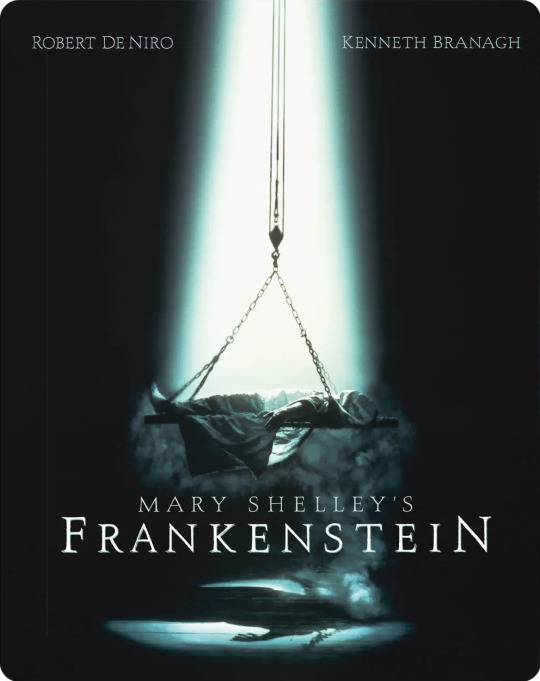
Mary Shelley's Frankenstein will be released on 4K Ultra HD on March 29 via Arrow Video. Laz Marquez designed the new cover art for the 1994 monster movie; the original poster is on the reverse side. A Steelbook edition with the theatrical art (right) is available exclusively from Zavvi for $40.99.
Kenneth Branagh (Thor, Murder on the Orient Express) directs from a script by Frank Darabont (The Shawshank Redemption) and Steph Lady, based on Mary Shelley's 1818 novel. Robert De Niro, Kenneth Branagh, Tom Hulce, Helena Bonham Carter, Aidan Quinn, Ian Holm, and John Cleese star.
Mary Shelley's Frankenstein has been newly restored in 4K from the original camera negative by Sony Pictures. A booklet is included. Special features are listed below.
Special features:
Audio commentary by film historians Michael Brooke and Johnny Mains (new)
Interview with composer Patrick Doyle (new)
Interview with costumer designer James Acheson (new)
Interview with make-up designer Daniel Parker (new)
Mary Shelley and The Creation of a Monster - Gothic specialists David Pirie, Jonathan Rigby, and Stephen Volk on the evolution of the Frankenstein story (new)
Dissecting Mary Shelley’s Frankenstein - Gothic specialists David Pirie, Jonathan Rigby, and Stephen Volk on the differences between the novel and the film (new)
Frankenstein (1910) - The first screen adaptation of Mary Shelley’s story restored in 2K by the Library of Congress, with music by Donald Sosin
Original trailers
Booklet with new writing by Jon Towlson and Amy C. Chambers (first pressing only)
At the turn of the 19th century, visionary scientist Victor Frankenstein (Kenneth Branagh) embarks on an obsessive quest to conquer the mysteries of human mortality. But his hubristic bid to create life out of death goes hideously wrong, and succeeds only in begetting a deformed monster (Robert De Niro). Horrified by what he has wrought, the scientist attempts to destroy his creation, but fails. Rejected by his creator and shunned by the world of man, the tormented creature swears vengeance against Frankenstein and his family. As the monster begins to enact his murderous revenge, Victor must face a terrible reckoning with the tragic consequences of attempting to play God.
#frankenstein#mary shelley's frankenstein#mary shelley#robert de niro#kenneth branagh#arrow video#laz marquez#dvd#gift#horror#helena bonham carter#tom hulce#aidan quinn#ian holm#john cleese
35 notes
·
View notes
Photo


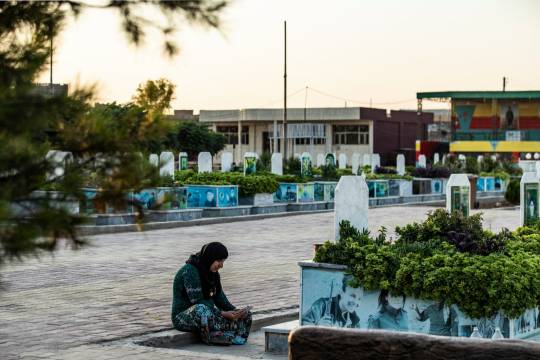
Zeynab Serekaniye, a Kurdish woman with a gap-toothed smile and a warm demeanor, never imagined she’d join a militia.
The 26-year-old grew up in Ras al-Ayn, a town in north-east Syria. The only girl in a family of five, she liked to fight and wear boys’ clothing. But when her brothers got to attend school and she did not, Serekaniye did not challenge the decision. She knew it was the reality for girls in the region. Ras al-Ayn, Arabic for “head of the spring”, was a green and placid place, so Serekaniye settled down to a life of farming vegetables with her mother.
That changed on 9 October 2019, days after former US president Donald Trump announced that US troops would pull out of north-east Syria, where they had allied with Kurdish-led forces for years. A newly empowered Turkey, which sees the stateless Kurds as an existential threat, and whose affiliated groups it has been at war with for decades, immediately launched an offensive on border towns held by Kurdish forces in north-east Syria, including Ras al-Ayn.
Just after 4pm that day, Serekaniye says, the bombs began to fall, followed by the dull plink and thud of mortar fire. By evening, Serekaniye and her family had fled to the desert, where they watched their town go up in smoke. “We didn’t take anything with us,” she says. “We had a small car, so how can we take our stuff and leave the people?” As they fled, she saw dead bodies in the street. She soon learned that an uncle and cousin were among them. Their house would become rubble.
After Serekaniye’s family was forced to resettle farther south, she surprised her mother in late 2020 by saying she wanted to join the Women’s Protection Units (YPJ). The all-female, Kurdish-led militia was established in 2013 not long after their male counterparts, the People’s Protection Units (YPG), ostensibly to defend their territory against numerous groups, which would come to include the Islamic State (Isis). The YPG have also been linked to systematic human rights abuses including the use of child soldiers.
Serekaniye’s mother argued against her decision, because two of her brothers were already risking their lives in the YPG.
But Serekaniye was unmoved. “We’ve been pushed outside of our land, so now we should go and defend our land,” she says. “Before, I was not thinking like this. But now I have a purpose – and a target.”
Serekaniye is one of approximately 1,000 women across Syria to have enlisted in the militia in the past two years. Many joined in anger over Turkey’s incursions, but ended up staying.
“In discussions [growing up], it was always, ‘if something happens, a man will solve it, not a woman’,” says Serekaniye. “Now women can fight and protect her society . This, I like.”
According to the YPG, a surge in recruitment has also been aided by growing pushback against and awareness of entrenched gender inequality and violence over recent years. In 2019 the Kurds’ Autonomous Administration of North and East Syria passed a series of laws to protect women, including banning polygamy, child marriages, forced marriages and so-called “honour” killings, although many of these practices continue. About a third of Asayish officers in the Kurdish security services in the region are now women and 40% female representation is required in the autonomous government. A village of only women, where female residents can live safe from violence, was built, evacuated after nearby bombings, and resettled again.
Yet evidence of the widespread violence that women continue to face is abundant at the local Mala Jin, or “women’s house”, which provide a refuge and also a form of local arbitration for women in need across Syria. Since 2014, 69 of these houses have opened, with staff helping any woman or man who come in with problems they’re facing including issues of domestic violence, sexual harassment and rape, and so-called “honour” crimes, often liaising with local courts and the female units of the Asayish intelligence agency to solve cases.
On a sun-scorched day in May, three distraught women arrive in quick succession at a Mala Jin centre in the north-eastern city of Qamishli. The first woman, who wears a heavy green abaya, tells staff that her husband has barely come home since she’s given birth. The second woman arrives with her husband in tow, demanding a divorce; her long ponytail and hands shake as she describes how he’d once beaten her until she had to get an abortion.
The third woman shuffles in pale-faced and in a loose dress, with rags wrapped around her hands. Her skin is raw pink and black from burns that cover much of her face and body. The woman describes to staff how her husband has beaten her for years and threatened to kill a member of her family if she left him. After he poured paraffin on her one day, she says, she fled his house; he then hired men to kill her brother. After her brother’s murder, she set herself on fire. “I got tired,” she says.
The Mala Jin staff, all women, tut in disapproval as she speaks. They carefully write down the details of her account, tell her they need to take photographs, and explain they plan to send the documents to the court to help secure his arrest. The woman nods then lies down on a couch in exhaustion.
Behia Murad, the director of the Qamishli Mala Jin, an older, kind-eyed woman in a pink hijab, says the Mala Jin centres have handled thousands of cases since they started, and, though both men and women come in with complaints, “always the woman is the victim”.
A growing number of women visit the Mala Jin centres. Staff say that this doesn’t represent increased violence against women in the region, but that more women are demanding equality and justice.
The YPJ is very aware of this shift and its potential as a recruitment tool. “Our aim is not to just have her hold her gun, but to be aware,” says Newroz Ahmed, general commander of the YPJ.
For Serekaniye it was not just that she got to fight, it was also the way of life the YPJ seemed to offer. Instead of working in the fields, or getting married and having children, women who join the YPJ talk about women’s rights while training to use a rocket-propelled grenade. They are discouraged, though not banned, from using phones or dating and instead are told that comradeship with other women is now the focus of their day to day lives.
Commander Ahmed, soft-spoken but with an imposing stare, estimates the female militia’s current size is about 5,000. This is the same size the YPJ was at the height of its battle against Isis in 2014 (though the media have previously reported an inflated number). If the YPJ’s continued strength is any indication, she adds, the Kurdish-led experiment is still blooming.
The number remains high despite the fact that the YPJ has lost hundreds, if not more, of its members in battle and no longer accepts married women (the pressure to both fight and raise a family is too intense, Ahmed says). The YPJ also claim it no longer accepts women under 18 after intense pressure from the UN and human rights groups to stop the use of child soldiers; although many of the women I met had joined below that age, though years ago.
Driving through north-east Syria, it is no wonder that so many women continue to join, given the ubiquitous images of smiling female shahids, or martyrs. Fallen female fighters are commemorated on colourful billboards or with statues standing proudly at roundabouts. Sprawling cemeteries are filled with shahids, lush plants and roses growing from their graves.
The fight against Turkey is one reason to maintain the YPJ, says Ahmed, who spoke from a military base in al-Hasakah, the north-east governorate where US troops returned after Joe Biden was elected. She claims that gender equality is the other. “We continue to see a lot of breaches [of law] and violations against women” in the region, she says. “We still have the battle against the mentality, and this is even harder than the military one.”
Tal Tamr, the YPJ base where Serekaniye is stationed, is a historically Christian and somewhat sleepy town. Bedouins herd sheep through fields, children walk arm-in-arm through village lanes, and slow, gathering dust storms are a regular afternoon occurrence. Yet Kurdish, US and Russian interests are all present here. Sosin Birhat, Serekaniye’s commander, says that before 2019 the YPJ base in Tal Tamr was tiny; now, with more women joining, she describes it as a full regiment.
The base is a one-storey, tan-coloured stucco building once occupied by the Syrian regime. The women grow flowers and vegetables in the rugged land at the back. They do not have a signal for their phones or power to use a fan, even in the sweltering heat, so they pass the time on their days off, away from the frontline, having water fights, chain smoking and drinking sugary coffee and tea.
Yet battle is always on their minds. Viyan Rojava, a more seasoned fighter than Serekaniye, talks of taking back Afrin. In March 2018, Turkey and the Free Syrian Army rebels it backed, launched Operation Olive Branch to capture the north-eastern district beloved for its fields of olive trees.
Since the Turkish occupation of Afrin, tens of thousands of people have been displaced – Rojava’s family among them – and more than 135 women remain missing, according to media reports and human rights groups. “If these people come here, they will do the same to us,” says Rojava, as other female fighters nod in agreement. “We will not accept that, so we will hold our weapons and stand against them.”
Serekaniye listens intently as Rojava speaks. In the five months since she joined the YPJ, Serekaniye has transformed. During military training in January, she broke a leg trying to scale a wall; now, she can easily handle her gun.
As Rojava speaks, the walkie-talkie sitting beside her crackles. The women at the base were being called to the frontline, not far from Ras al-Ayn. There is little active fighting these days, yet they maintain their positions in case of a surprise attack. Serekaniye dons her flak jacket, grabs her Kalashnikov and a belt of bullets. Then she gets into an SUV headed north, and speeds away.
By Elizabeth Flock. Additional reporting by Kamiran Sadoun and Solin Mohamed Amin.
#syria#Zeynab Serekaniye#kurdish#long post#war#Ras al Ayn#women#Elizabeth Flock#Kamiran Sadoun#Solin Mohamed Amin#ypj#turkish#afrin#Viyan Rojava#free syrian army#operation olive branch#tal tamr#sosin birhat#isis#america#Women’s Protection Units#people's protection units#women's protection unit#ypg#mala jin#violence#asia
40 notes
·
View notes
Video
youtube
Frankenstein Film | C. 1910
One of the earliest known Frankenstein films. Restored in 2017 by the Library of Congress National Audio-Visual Conservation Center, with new music by Donald Sosin.
#20th Century#Film#frankenstein#vintage#A marvelous bit of history#beautiful and clever horror#the reanimation is still so effective#to have seen this in 1910
16 notes
·
View notes
Photo

24 January 2020
Film: FRAGMENTS OF AN EMPIRE (d. Fridrikh Ermler, 1929, USSR)
Forum: Film Studies Center Format: 35mm
Observations: While not so well known as films by contemporaries Eisenstein, Vertov, and Pudovkin, this feature was every bit as self-assured and skillful as any feature in the Soviet canon. The main character (in a strong performance by Fyodor Nikitin) recovers from shell-shock and amnesia from WWI, awakening in a rebuilt socialist republic. (Interestingly, the story is not a 100% endorsement of the Soviet system, portraying its supporters in a less than flattering light.) It was screened with music performed by Donald Sosin. About 40 in attendance.
1 note
·
View note
Audio
315 days until Christmas 🎅🏻🎁🎄❄☃🌨
0 notes
Text
Here’s some exciting news for comedy fans: Kino is releasing two of W.C. Fields’ silent comedies today! While his voice is iconic, it’s fascinating to see what he could do with pantomime. Oh, and one of the films features Louise Brooks.
As always, a huge thanks to Kino for providing review copies.
Running Wild and It’s the Old Army Game are both available on DVD and Bluray.
Both films are mastered in 2K from 35mm elements and include audio commentaries from film historian James L. Neibaur.
Samples
Here are some screencaps from the Blurays. I have cropped out pillarboxes but have not otherwise tweaked the images.
Running Wild
It’s the Old Army Game
Music
Both films have new scores for their HD debut. It’s the Old Army Game has an organ score by Ben Model and Running Wild has a piano score by Donald Sosin. The scores are absolute delights and add considerably to the films they accompany.
These films look great and sound great. W.C. Fields fans will want to check out their favorite in his pre-sound days and Louise Brooks fans will be particularly interested in It’s the Old Army Game. Hats off to Kino for continuing to release these wonderful Paramount gems in HD.
Again, both films are on DVD and Bluray and were released today. You can order It’s the Old Army Game here and Running Wild here. The Blurays are region A, so be sure to check your equipment if you live outside that zone.
***
Like what you’re reading? Please consider sponsoring me on Patreon. All patrons will get early previews of upcoming features, exclusive polls and other goodies.
Unboxing the Silents: Two W.C. Fields Silent Films on Bluray from Kino (with bonus Louise Brooks) Here's some exciting news for comedy fans: Kino is releasing two of W.C. Fields' silent comedies today!
2 notes
·
View notes
Video
youtube
The Jewish Museum and Film at Lincoln Center are delighted to continue their partnership to bring you the 29th annual New York Jewish Film Festival, presenting films from around the world that explore the Jewish experience. This year’s festival presents an engaging lineup of narratives, documentaries, and shorts, from restored classics to world premieres. See showtimes & get tickets: https://www.nyjff.org Dani Menkin’s documentary Aulcie is the Opening Night selection, screening in its New York premiere on Thursday, January 16. When a scout for the Israeli basketball team Maccabi Tel Aviv spotted Aulcie Perry on Harlem’s Rucker Court in 1976, he recruited the athlete to join their fledgling team. Less than a year later, Perry led the team to a win in the 1977 European Championship, a victory that he repeated four years later. Aulcie delves into the riveting story of this legendary player, who put Israeli basketball on the map, converted to Judaism, became an Israeli citizen, and overcame his demons. The Closing Night film is the New York premiere of Dror Zahavi’s Crescendo. When a world-famous conductor (played by Toni Erdmann’s Peter Simonischek) accepts the job to create an Israeli-Palestinian youth orchestra, he steps into a firestorm of conflict and mistrust as he tries to bring the two factions of young musicians together in harmony. The Centerpiece selection focuses on the career of Marceline Loridan-Ivens, the French film director, author, producer, and actress who died in 2018. The Birch Tree Meadow (2003), starring Anouk Aimée and August Diehl, is Loridan-Ivens’s autobiographical drama about an Auschwitz survivor who returns to the camp to confront her past and the young descendant of an SS guard she meets there. This screening is part of an annual initiative highlighting work by women filmmakers that merit broader American recognition. The 2020 NYJFF marks the 50th anniversary of legendary director Vittorio De Sica’s Academy Award–winning The Garden of the Finzi-Continis. This beloved Italian drama, based on the classic novel by Giorgio Bassani, is set amidst the rise of Fascism in the 1930s. The wealthy, intellectual Finzi-Contini family’s estate serves as a gathering place for the local Jewish community that tries to remain sheltered from the country’s growing anti-Semitism. While romance unfolds behind the tall, stone walls of the garden, an increasingly hostile reality sets in. The NYJFF will present the World Premiere of the new restoration of Charles Davenport’s long-lost 1919 silent film Broken Barriers (Khavah), the first film based on the Sholem Aleichem stories that inspired Fiddler on the Roof. This story is uniquely told from the perspective of Khavah, Tevye the milkman’s daughter, who falls in love with the gentile boy Fedka and navigates the reverberations from her community and family. Donald Sosin will provide live piano accompaniment. (The restoration was completed by the National Center for Jewish Film.) This year’s New York Jewish Film Festival was selected by Rachel Chanoff, Director, THE OFFICE performing arts + film; Gabriel Grossman, Coordinator, New York Jewish Film Festival/The Jewish Museum; and Aviva Weintraub, Associate Curator, The Jewish Museum and Director, New York Jewish Film Festival; with Dennis Lim, Director of Programming, Film at Lincoln Center, as adviser. SUPPORT The New York Jewish Film Festival is made possible by the Martin and Doris Payson Fund for Film and Media. Generous support is also provided by Wendy Fisher and Dennis Goodman, Sara and Axel Schupf, Louise and Frank Ring, The Liman Foundation, Mimi and Barry Alperin, an anonymous gift, the Ike, Molly and Steven Elias Foundation, Amy and Howard Rubenstein, Robin and Danny Greenspun, Steven and Sheira Schacter, and through public funds from the New York State Council on the Arts with the support of Governor Andrew M. Cuomo and the New York State Legislature and the New York City Department of Cultural Affairs in partnership with City Council. Additional support is provided by the Polish Cultural Institute New York, Dutch Culture USA, the German Consulate General New York, and the Cultural Services of the French Embassy in the United States. ACKNOWLEDGMENTS Fiona Drenttel, Intern; Joan Dupont, Film Critic; Nicola Galliner, Jewish Film Festival Berlin & Brandenburg; Stuart Hands, Toronto Jewish Film Festival; Annette Insdorf, Columbia University; Marlene Josephs, Volunteer; Linda Lipson, Volunteer; Richard Peña, Columbia University; Sophie Rupp, Intern. Additional support is provided by The Jack and Pearl Resnick Foundation. More info: http://filmlinc.org Subscribe: http://www.youtube.com/subscription_center?add_user=filmlincdotcom Like on Facebook: http://facebook.com/filmlinc Follow on Twitter: http://twitter.com/filmlinc Follow on Instagram: http://instagram.com/filmlinc
1 note
·
View note
Photo

Freight slump flashes economic warning signs amid US-China trade war Air cargo boxes at Tegel Airport in Berlin. Axel Schmidt | AFP | Getty Images When President Donald Trump announced last year that tariffs on hundreds of Chinese-made goods, including bicycle components, would rise from 10% to up to 25%, Wayne Sosin began to stock up.
0 notes
Text
Advocates Shred ‘LGBTQ For Trump’ T-Shirt Sale Ahead Of Pride Month
The White House may not have issued a Pride Month proclamation for two years in a row, but that hasn’t stopped President Donald Trump’s campaign from discounting their official “LGBTQ for Trump” T-shirts just in time for June.
Billed as an “exclusive equality tee,” the shirts feature a rainbow design and allow customers to “show your pride and your support for Trump.”
The designs aren’t new ― in fact, they first appeared on the president’s official site as far back as 2016, when he was still on the campaign trail. But they’ve become a hot topic on social media thanks to a Thursday article by NewNowNext reporter Kate Sosin, who pointed out that they’d been recently discounted from $30 to $24.
Sosin’s article was followed by similar pieces in Newsweek, The Advocate and other media outlets, and prompted GLAAD Chief Programs Officer Zeke Stokes to issue a statement on Twitter encouraging LGBTQ customers to shop elsewhere.
Other LGBTQ rights advocates and media personalities felt similarly, blasting the news as hypocritical given Trump’s anti-LGBTQ platform. Earlier this week, his administration has proposed a rule change that would allow homeless shelters to deny transgender people equal access to services.
The Trump campaign did not immediately respond to a request for comment about the shirts from HuffPost.
Prior to Trump’s 2016 election win, however, then-spokesman Boris Epshteyn told CNN that the campaign was selling the shirts because the candidate “has spoken to the LGBT community throughout his lifetime.”
“When the horrible shooting in Orlando happened, he said that ISIS specifically is targeting the gay/LGBT community,” Epshteyn said at the time. “So, this is a candidate who’s very open to all communities, including this one, so we should be celebrating this, because it is revolutionary almost for a Republican to be doing this kind of outreach.”
Download
.st0{display:none;} .st1{display:inline;} .st2{fill:#FFFFFF;} .st3{fill:#0DBE98;}
REAL LIFE. REAL NEWS. REAL VOICES.
Help us tell more of the stories that matter from voices that too often remain unheard.
Join HuffPost Plus
Original Article : HERE ; This post was curated & posted using : RealSpecific
Advocates Shred ‘LGBTQ For Trump’ T-Shirt Sale Ahead Of Pride Month was originally posted by MetNews
0 notes
Text
The First Film Version of Frankenstein, Newly Restored!
The First Film Version of Frankenstein, Newly Restored!
By Wendi Maloney
Published November 15, 2018 at 05:13PM
This is a guest post by Mike Mashon, head of the Moving Image Section of the Motion Picture, Broadcasting and Recorded Sound Division. He writes about the first of many films based on Mary Shelley’s novel “Frankenstein,” published 200 years ago this year. The post is republished from the division’s blog, “Now See Hear!”
A scene from “Frankenstein,” published on the cover of the March 15, 1910, issue of the Edison Kinetogram.
Rarely has the arrival of a film at the Library’s Packard Campus for Audio Visual Conservation occasioned as much anticipation as the day in April 2015 when we accessed into our collection the sole surviving nitrate print of the first cinematic adaptation of “Frankenstein.” It’s not because the film, produced in 1910 by the Edison Manufacturing Company, is all that revelatory—it’s most decidedly not—or because it’s especially rare, as a quick search on YouTube will attest. Rather, this is an instance in which the story of how a particular reel came to be in our collection is more interesting than the film itself.
As an acquisitions officer, I work a lot with collectors and have a great deal of respect for them. If it weren’t for collectors, huge chunks of film history would have vanished forever; in many ways, our Silent Film Project is a testament to them. But, sometimes, I have to explain to eager sellers that there’s a difference between rarity and value; just because there’s only one print of a particular film doesn’t mean the print has much monetary value if there’s no market for it.
The nitrate print of “Frankenstein” does, however, have market value, based not only on rarity, since it truly does seem to be the single extant print, but also crucially on the cultural durability of Mary Shelley’s 1818 creation, whose bicentennial we celebrate this year.
The print also comes with a bit of notoriety because of its previous owner: Alois F. “Al” Dettlaff of Cudahy, Wisconsin. He acquired the print as part of a larger collection in the 1950s, but he wasn’t aware of the film’s significance until the American Film Institute included “Frankenstein” on a list of “top 10 most wanted lost films” in 1980.
I never met Dettlaff, but it seems like everyone in film collecting circles has a story. Often they’re about the “Father Time” character he enjoyed portraying at film conventions, compete with robe, scythe and hourglass to complement his long white beard.
He was exceptionally protective of the “Frankenstein” print, traveling with it to film festivals and monster conventions. He even took it to the Academy of Motion Picture Arts and Sciences in 1986, where academy president and famed director Robert Wise was unable to convince him to let the reel be properly preserved and archived. Eventually, Dettlaff had the film transferred to DVDs he would sell at his appearances, and it’s rips from that DVD you can find on YouTube. Dettlaff died at home in 2005 surrounded by his film collection, including “Frankenstein,” still unpreserved.
Until now, that is.
The Library purchased the Dettlaff Collection in 2014. It is full of titles we are delighted to add to our holdings, but we were especially interested to see “Frankenstein,” joking that perhaps it might arrive from Wisconsin on a bed of spun gold.
While it came in a fairly nondescript can, it didn’t take us long to get the reel into our film preservation lab for a 2K scan in advance of photochemical preservation. From that 2K scan, we worked on a digital restoration. The film’s head credits and the first intertitle were missing, but fortunately the Edison Historic Site in East Orange, New Jersey, had a copy of the head credit we could drop into place; the intertitle was recreated using the style of the other titles. We asked Donald Sosin, a highly regarded silent film composer and accompanist, to provide a score.
The newly restored version of the 1910 “Frankenstein” is also available on the Library’s YouTube channel and in the National Screening Room, our recently launched digital collection of films. And, like most films in the screening room, it’s freely downloadable in both ProRes LT and MPEG-4 formats, complete with the Sosin score.
Not long after creating the monster, Victor Frankenstein was consumed with regrets, exclaiming that he “had desired it with an ardor that far exceeded moderation; but now that I had finished, the beauty of the dream vanished, and breathless horror and disgust filled my heart.”
In our case, however, reanimating this notorious bit of cinema history was, and remains, a delight.
{mediaObjectId:'786ECF3082A10060E0538C93F1160060',playerSize:'mediumStandard'}
Read more on https://loc.gov
0 notes